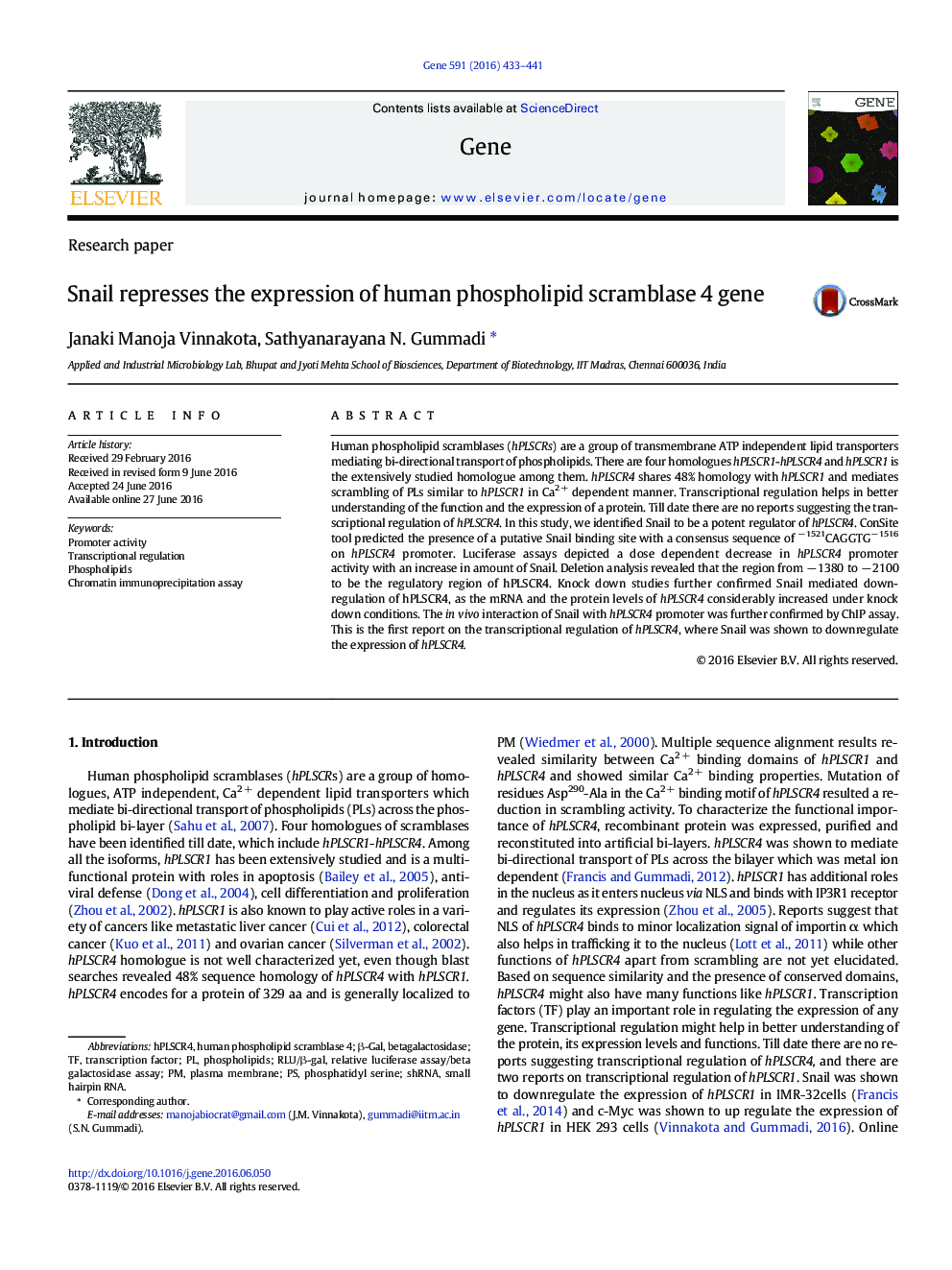| Article ID | Journal | Published Year | Pages | File Type |
|---|---|---|---|---|
| 2814794 | Gene | 2016 | 9 Pages |
•Snail transcriptionally represses the expression of hPLSCR4 in HEK 293 cell lines•1521 CAGGTG − 1516 is the actual Snail binding site on hPLSCR4 promoter•TGF-β downregulates the expression of hPLSCR4•In vivo interactions of Snail with hPLSCR4 promoter in Huh-7 and U-87 MG suggest potential roles of hPLSCR4 in cancer
Human phospholipid scramblases (hPLSCRs) are a group of transmembrane ATP independent lipid transporters mediating bi-directional transport of phospholipids. There are four homologues hPLSCR1-hPLSCR4 and hPLSCR1 is the extensively studied homologue among them. hPLSCR4 shares 48% homology with hPLSCR1 and mediates scrambling of PLs similar to hPLSCR1 in Ca2 + dependent manner. Transcriptional regulation helps in better understanding of the function and the expression of a protein. Till date there are no reports suggesting the transcriptional regulation of hPLSCR4. In this study, we identified Snail to be a potent regulator of hPLSCR4. ConSite tool predicted the presence of a putative Snail binding site with a consensus sequence of − 1521CAGGTG− 1516 on hPLSCR4 promoter. Luciferase assays depicted a dose dependent decrease in hPLSCR4 promoter activity with an increase in amount of Snail. Deletion analysis revealed that the region from − 1380 to − 2100 to be the regulatory region of hPLSCR4. Knock down studies further confirmed Snail mediated downregulation of hPLSCR4, as the mRNA and the protein levels of hPLSCR4 considerably increased under knock down conditions. The in vivo interaction of Snail with hPLSCR4 promoter was further confirmed by ChIP assay. This is the first report on the transcriptional regulation of hPLSCR4, where Snail was shown to downregulate the expression of hPLSCR4.
